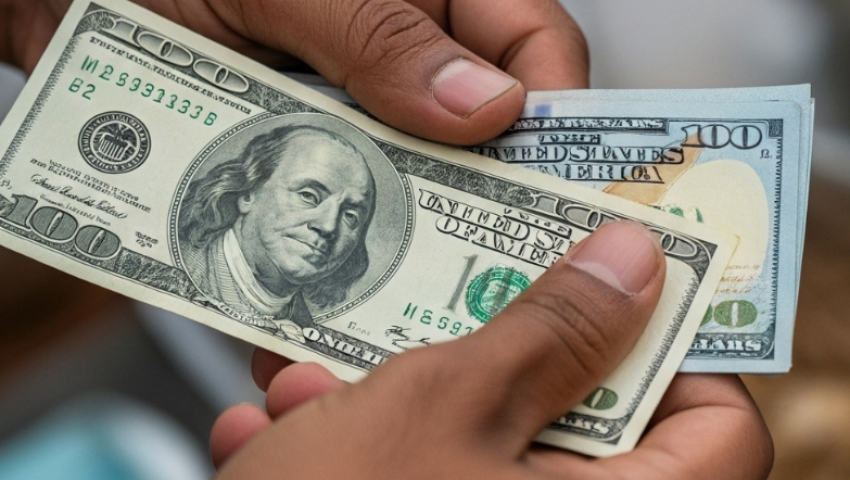
The Dollar's Shadow: Unraveling the Maldives' Currency Conundrum
Explore how the Maldives navigates its 2024–25 US Dollar shortage, from black-market premiums to bold policy fixes, and what it means for businesses and citizens.
Beneath the shimmering turquoise waters and the postcard-perfect resorts, the Maldives, a jewel of the Indian Ocean, grapples with a persistent economic challenge: the elusive US Dollar. For this island nation, where tourism is the very heartbeat of its economy, the dollar isn't just a foreign currency; it's the lifeblood that fuels everything from essential imports to daily transactions. Yet, as we navigate 2025 and look ahead to 2026, the story of the Maldivian Rufiyaa (MVR) and its US Dollar peg is one of constant tension, a high-stakes drama playing out in boardrooms, bustling markets, and even in the pockets of everyday citizens.
The Dollar's Unshakeable Grip
Maldives is a country where almost everything you consume, from the fuel that powers your boat to the food on your table, arrives from overseas. This deep reliance on imports creates an insatiable demand for US Dollars, a demand that consistently outpaces the formal supply. In 2023, for instance, the nation imported a staggering $3.5 billion worth of goods, while its exports barely touched $421 million. This gaping trade deficit, coupled with a ballooning national debt – which hit an alarming $9.4 billion by late 2024, equivalent to 134.2% of its GDP – means the country needs a constant flow of dollars just to keep its head above water. With $1 billion in external debt payments due in 2025 alone, including a significant $500 million Sukuk, the pressure on the dollar supply is immense.
The Maldivian Rufiyaa is officially pegged to the US Dollar within a narrow band, typically trading around MVR 15.42 to $1. This peg is meant to offer stability, a predictable anchor in a volatile global sea. But when the formal channels can't meet the overwhelming demand, a shadow economy emerges.
The Whispers of the Black Market
Step into the informal corners of Malé, and you'll hear the whispers of the black market. Here, the US Dollar trades at a significant premium, a stark indicator of its true scarcity. In June 2024, for example, while the official rate hovered around MVR 15.42, the black market rate soared to MVR 19.70 – a nearly 28% premium. Even in early 2025, despite government efforts, the rate stubbornly lingered around MVR 19 to MVR 19.50.
This parallel market isn't just a fringe activity; it's deeply intertwined with the very industry that brings in the most dollars: tourism. The International Monetary Fund (IMF) has pointed out that the tourism sector itself acts as a "key supplier and driver" of this black market. Large tourism companies, with their vast dollar earnings, historically found it more convenient or profitable to use informal channels to pay local vendors and services. This created an oligopoly, where a few major players could influence the black market rates, keeping that premium stable and lucrative.
The Squeeze on Local Businesses
For local businesses, especially importers and Small and Medium Enterprises (SMEs), the dollar shortage is a daily struggle. A wholesaler in Malé, needing $2 million a month to stock their shelves. They approach their bank, perhaps the dominant Bank of Maldives (BML), only to be told they can get a mere 5% or 20-30% of their required dollars. "We stopped trying to get anything converted from banks a long time ago," one importer lamented, highlighting the discretionary and insufficient nature of bank support.
This forces them into the black market, where they pay that hefty 14-28% premium. This isn't just an inconvenience; it's a direct hit to their bottom line, inflating the cost of every imported item, from groceries to garments, and inevitably passing those costs onto consumers. It's a hidden tax on every Maldivian household. Beyond the dollar hunt, businesses also grapple with cash flow nightmares, like paying Goods and Services Tax (GST) on income they haven't even received yet, leading to fines from the Maldives Inland Revenue Authority (MIRA). And when it comes to formal financing, the struggle continues. With interest rates often around 12%, many businesses find it unsustainable, wishing for rates closer to 6-8%.
The Human Cost: From Resorts to Wallets
The dollar crisis isn't just about big numbers and corporate balance sheets; it touches the lives of every Maldivian. For years, citizens have faced tight restrictions on foreign transactions. BML, for instance, recently raised the monthly foreign payment limit on MVR debit cards from $250 to $500, but slashed credit card limits for Standard and Gold cards to a mere $100. To add insult to injury, a new transaction fee of up to 30% was slapped on purchases from popular e-commerce platforms like Temu and Shein.
This means a student trying to pay overseas tuition, a family arranging medical treatment abroad, or even someone trying to subscribe to a digital service, often finds themselves forced into the informal market, paying significantly worse rates. It's a frustrating reality that erodes their purchasing power and makes essential foreign transactions a costly ordeal.
Perhaps one of the most poignant impacts has been on the very backbone of the Maldivian economy: its tourism workers. With the new mandatory dollar conversion rules taking effect on January 1, 2025, many resorts and large tourism operators began shifting from paying salaries and service charges in US Dollars to Maldivian Rufiyaa.10 Imagine being a mid-level resort employee, used to receiving a significant portion of your peak season pay (around $1,500) in dollars, only to be told it will now be in Rufiyaa.
Prominent Maldivian politician Qasim Ibrahim publicly criticized this move, arguing that since service charges are collected in US Dollars from tourists, staff should rightfully receive their share in the same currency. Converting it to Rufiyaa, he asserted, "shortchanges workers". This shift, adopted by major players like Universal Resorts and Trans Maldivian Airways, threatens to reduce real take-home pay and could even discourage younger generations from pursuing careers in tourism, potentially leading to a long-term talent drain.
The Government's Counter-Offensive
Recognizing the gravity of the situation, the government, led by President Dr. Mohamed Muizzu and the Maldives Monetary Authority (MMA), has launched a multi-pronged counter-offensive. The centerpiece is the new Foreign Currency Act, which came into effect on January 1, 2025. This law mandates that tourism businesses, from large resorts (Category A) converting $500 per tourist or 20% of monthly revenue, to smaller guesthouses (Category B) converting $25 per tourist or 20% – must deposit a portion of their foreign currency earnings into local banks. Even non-tourism businesses earning over $15 million annually in foreign currency must convert 20% of their income. The MMA then claims 90% of these converted dollars, centralizing control over foreign currency flows.
The government reports encouraging initial results. By early 2025, over $150 million had reportedly been deposited into the local banking system under these new rules, a 40% increase from previous figures. President Muizzu proudly announced that the tourism sector alone contributed $214 million by May 2025, with a reported compliance rate of around 95%.
Beyond currency controls, the government is also tackling underlying fiscal imbalances. This includes a commitment to phase out universal subsidies on fuel, electricity, and food staples by the end of 2024, replacing them with targeted direct income transfers. They're also reining in public investment spending and reforming State-Owned Enterprises (SOEs), aiming to stop SOEs from buying US Dollars from the black market by mid-2025.
President Muizzu has set an ambitious target: to eliminate the black market for US Dollars and restore access to foreign currency at the official bank rate by the end of 2027. To achieve this, plans are in motion to double the US Dollar allowance for Maldivians departing from Velana International Airport to $1,000 in the first quarter of 2026, increase credit card limits in the same period, and boost the proportion of dollars released to banks for business imports from July 2025.
The Road Ahead: A Balancing Act
Despite these determined efforts, the black market's persistence, albeit with some fluctuations, signals that the fundamental supply-demand imbalance for US Dollars remains a formidable challenge. The low season for tourism (May-August) further exacerbates the supply squeeze, making the task even harder.
The Maldives' journey is not unique. Many Small Island Developing States (SIDS) face similar vulnerabilities: heavy import dependence, susceptibility to external shocks, and the inherent challenges of maintaining a currency peg without sufficient reserves. The experiences of nations like Aruba, which sustains a dollar-linked currency with sound economic policies, or Fiji and Cabo Verde, which are building tourism resilience through sustainable finance, offer valuable lessons.
The path to sustainable stability for the Maldives is a delicate balancing act. It requires not just stringent regulations, but a deep commitment to fiscal discipline, economic diversification, and strengthening the formal financial system. The dollar's shadow may loom large, but with strategic policy, private sector cooperation, and a clear vision, the Maldives aims to emerge into a brighter, more stable economic future.
We invite you to weigh in. Have you felt the pinch of the dollar crunch? Are our hybrid-peg proposals bold enough, or too risky? Share your insights at insights@maldicore.com, and let’s refine a resilient blueprint for these island challenges.

Maldicore Support
Leave a comment
Your email address will not be published. Required fields are marked *

